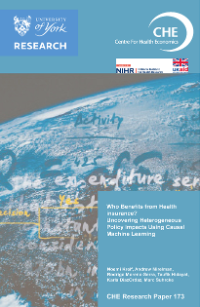Who benefits from health insurance? Uncovering heterogeneous policy impacts using causal machine learning
Posted on 6 October 2020

To be able to target health policies more efficiently, policymakers require knowledge about which individuals benefit most from a particular programme. While traditional approaches for subgroup analyses are constrained only to consider a small number of arbitrarily set, pre-defined subgroups, recently proposed causal machine learning (CML) approaches help explore treatment-effect heterogeneity in a more flexible yet principled way. This paper illustrates one such approach – ‘causal forests’ – in evaluating the effect of mothers’ health insurance enrolment in Indonesia. Contrasting two health insurance schemes (subsidised and contributory) to no insurance, we find beneficial average impacts of enrolment in contributory health insurance on maternal health care utilisation and infant mortality. For subsidised health insurance, however, both effects were smaller and not statistically significant. The causal forest algorithm identified significant heterogeneity in the impacts of the contributory insurance scheme: disadvantaged mothers (i.e. with lower wealth quintiles, lower educated, or in rural areas) benefit the most in terms of increased health care utilisation. No significant heterogeneity was found for the subsidised scheme, even though this programme targeted vulnerable populations. Our study demonstrates the power of CML approaches to uncover the heterogeneity in programme impacts, hence providing policymakers with valuable information for programme design.
Full Report: CHE Research Paper 173 (PDF ![]() , 3,756kb)
, 3,756kb)
Other papers in the CHE Research paper series can be found at: CHE Research Papers

